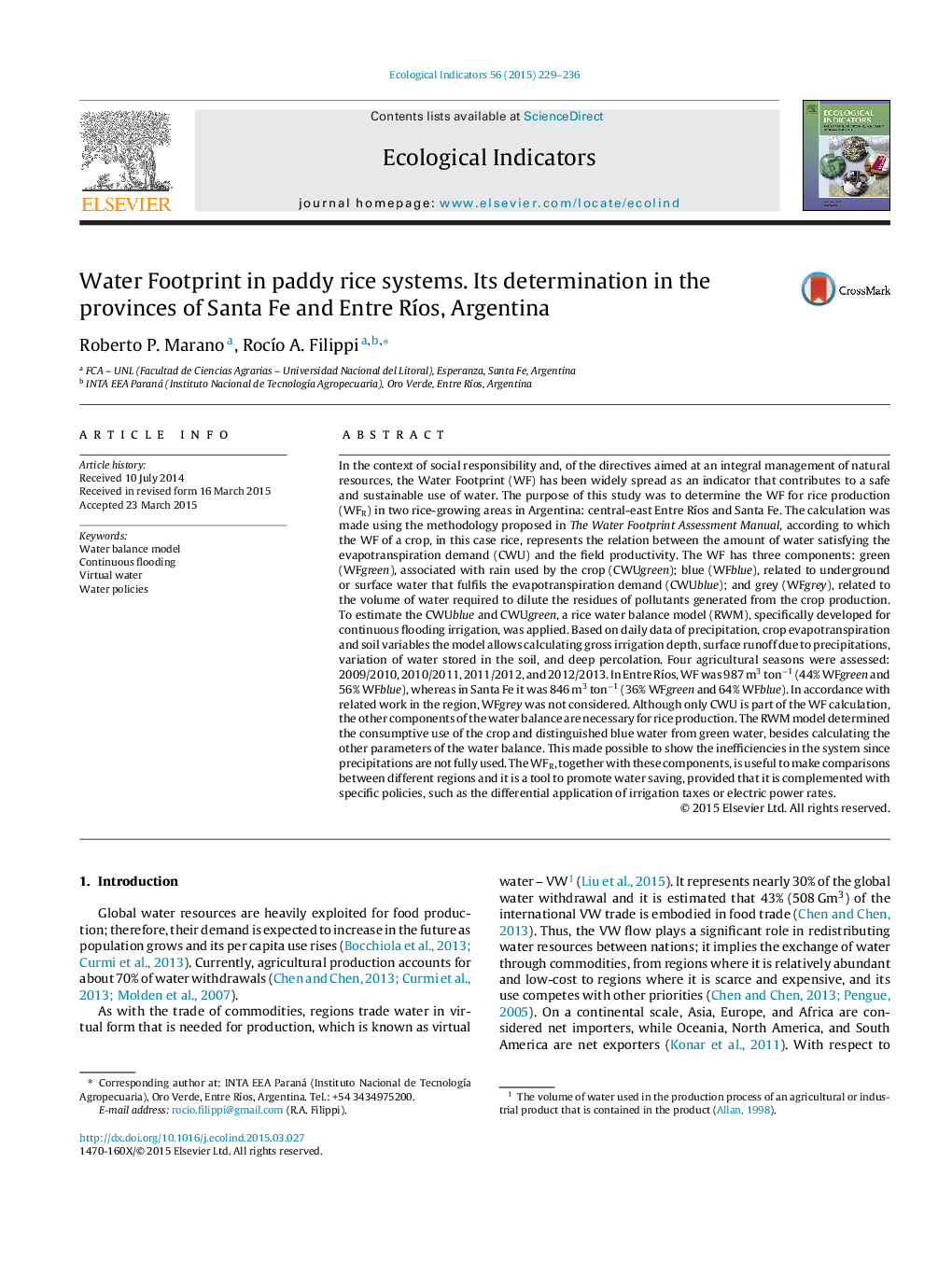| کد مقاله | کد نشریه | سال انتشار | مقاله انگلیسی | نسخه تمام متن |
|---|---|---|---|---|
| 6294367 | 1617145 | 2015 | 8 صفحه PDF | دانلود رایگان |
عنوان انگلیسی مقاله ISI
Water Footprint in paddy rice systems. Its determination in the provinces of Santa Fe and Entre RÃos, Argentina
دانلود مقاله + سفارش ترجمه
دانلود مقاله ISI انگلیسی
رایگان برای ایرانیان
کلمات کلیدی
موضوعات مرتبط
علوم زیستی و بیوفناوری
علوم کشاورزی و بیولوژیک
بوم شناسی، تکامل، رفتار و سامانه شناسی
پیش نمایش صفحه اول مقاله

چکیده انگلیسی
In the context of social responsibility and, of the directives aimed at an integral management of natural resources, the Water Footprint (WF) has been widely spread as an indicator that contributes to a safe and sustainable use of water. The purpose of this study was to determine the WF for rice production (WFR) in two rice-growing areas in Argentina: central-east Entre RÃos and Santa Fe. The calculation was made using the methodology proposed in The Water Footprint Assessment Manual, according to which the WF of a crop, in this case rice, represents the relation between the amount of water satisfying the evapotranspiration demand (CWU) and the field productivity. The WF has three components: green (WFgreen), associated with rain used by the crop (CWUgreen); blue (WFblue), related to underground or surface water that fulfils the evapotranspiration demand (CWUblue); and grey (WFgrey), related to the volume of water required to dilute the residues of pollutants generated from the crop production. To estimate the CWUblue and CWUgreen, a rice water balance model (RWM), specifically developed for continuous flooding irrigation, was applied. Based on daily data of precipitation, crop evapotranspiration and soil variables the model allows calculating gross irrigation depth, surface runoff due to precipitations, variation of water stored in the soil, and deep percolation. Four agricultural seasons were assessed: 2009/2010, 2010/2011, 2011/2012, and 2012/2013. In Entre RÃos, WF was 987Â m3Â tonâ1 (44% WFgreen and 56% WFblue), whereas in Santa Fe it was 846Â m3Â tonâ1 (36% WFgreen and 64% WFblue). In accordance with related work in the region, WFgrey was not considered. Although only CWU is part of the WF calculation, the other components of the water balance are necessary for rice production. The RWM model determined the consumptive use of the crop and distinguished blue water from green water, besides calculating the other parameters of the water balance. This made possible to show the inefficiencies in the system since precipitations are not fully used. The WFR, together with these components, is useful to make comparisons between different regions and it is a tool to promote water saving, provided that it is complemented with specific policies, such as the differential application of irrigation taxes or electric power rates.
ناشر
Database: Elsevier - ScienceDirect (ساینس دایرکت)
Journal: Ecological Indicators - Volume 56, September 2015, Pages 229-236
Journal: Ecological Indicators - Volume 56, September 2015, Pages 229-236
نویسندگان
Roberto P. Marano, RocÃo A. Filippi,